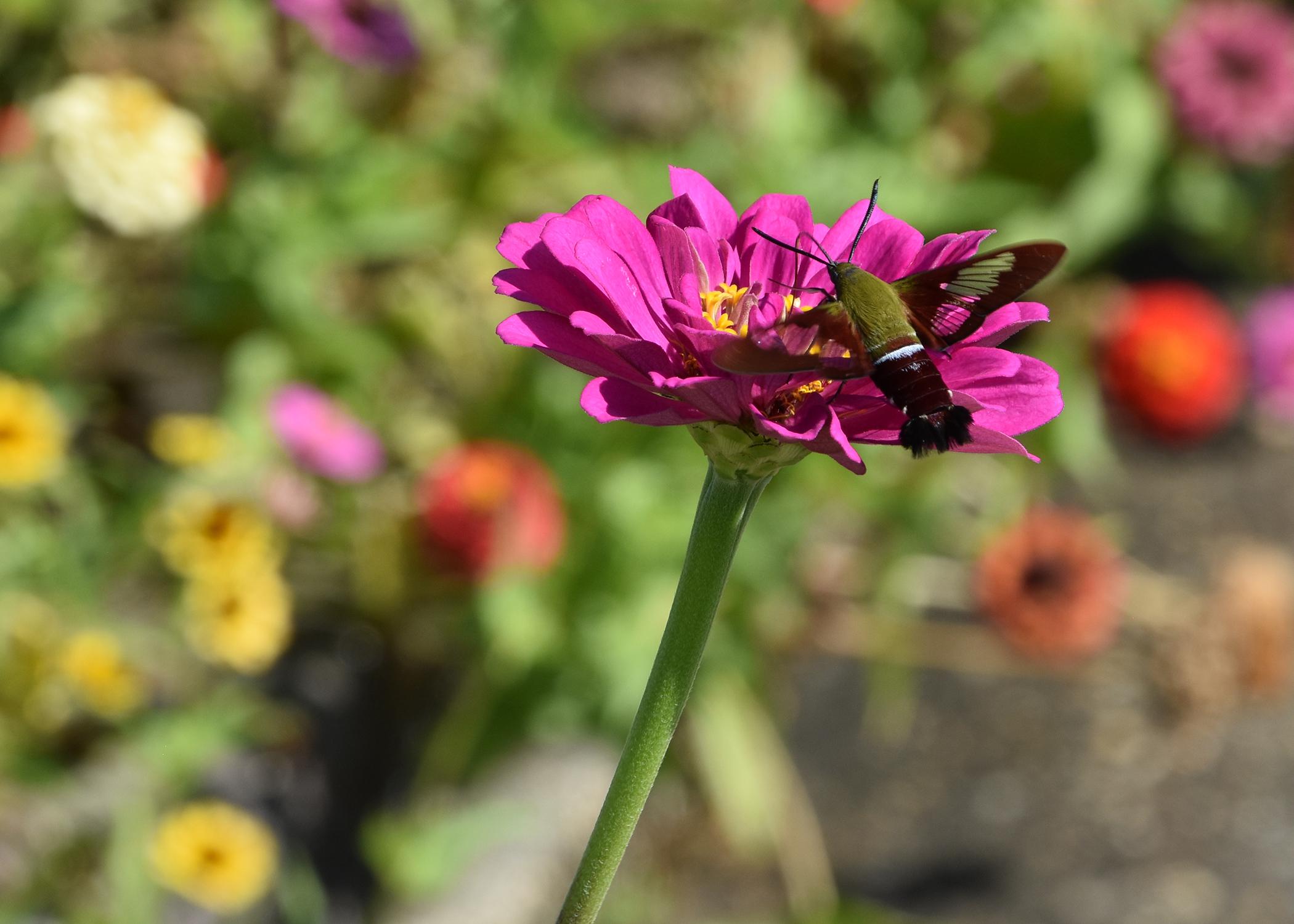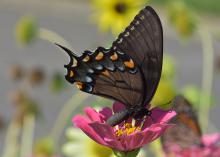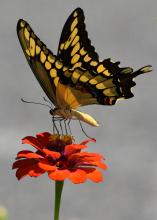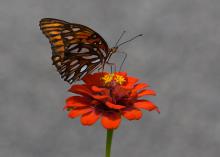Information Possibly Outdated
The information presented on this page was originally released on August 16, 2021. It may not be outdated, but please search our site for more current information. If you plan to quote or reference this information in a publication, please check with the Extension specialist or author before proceeding.
Pollinators enjoy feeding on colorful summer blooms
A couple of weeks ago, I wrote about the zinnias I’m growing in the hell strip planting bed out by the street. It is gorgeous; judging by the response we’ve had on social media, an awful lot of other gardeners agree.
After mowing my lawn yesterday and cooling off in the shade, I admired the colorful show from the various zinnias.
I was amazed by the number the insects dancing amongst the bright flowers. Butterflies, bees and the occasional hummingbird were enjoying themselves. I couldn’t help but to grab my camera and get some shots of these pollinators to share with Southern Gardening Nation.
The most interesting visitor was the day-flying clearwing hummingbird moth. This insect is a hummingbird mimic; the body colorations resemble a hummingbird. The wings are mostly clear with reddish-brown borders and scaling. It even hovers over the over the zinnia flowers while it sips the sweet nectar.
I did a little homework and found the clearwing hummingbird moth has a native range across North America from Alaska to Newfoundland in the north and to the Gulf of Mexico states to south Florida.
A butterfly that we always have in abundance in my home landscape is the giant swallowtail. I think these are gorgeous butterflies that are very distinct from the other swallowtail visitors. The wings are black and have a bright-yellow bar and side diagonal stripes.
We see lots of these because of all the citrus I grow, as citrus just happens to be one of the preferred forage plants for the caterpillars. These caterpillars are called orange dogs, and their appearance mimics bird poop.
I loved watching the honeybees and bumbles being very busy and diligently working the zinnia blooms differently. Honeybees carefully visit each flower, filling what I like to call their saddlebags with pollen to take back to the hive.
The bumblebees just kind of rummage around the flowerheads, and I find it fascinating how they become covered with pollen.
Other visitors included Gulf fritillary and Monarch butterflies. While the zinnias are not the preferred forage for these two species, they couldn’t resist the tasty nectar on a warm August afternoon.
We also had an abundance of tiger swallowtail butterflies. These bright-yellow insects were right at home with the zinnia flowers. There were also a few black butterflies that turned out to be dark-phase tiger swallowtails. This is another interesting story of mimicry.
Another black swallowtail, the pipevine, is unpalatable to predators due to toxins gathered from their caterpillars’ forage plants. The dark-phase tiger swallowtails are all females whose offspring have the color genetics to eventually mimic the distasteful pipevine and spare them from predators. This is a case of natural selection happening right before our eyes.
Planting for pollinators is good for them and can make an already pretty garden spot even livelier.






